|
|
|
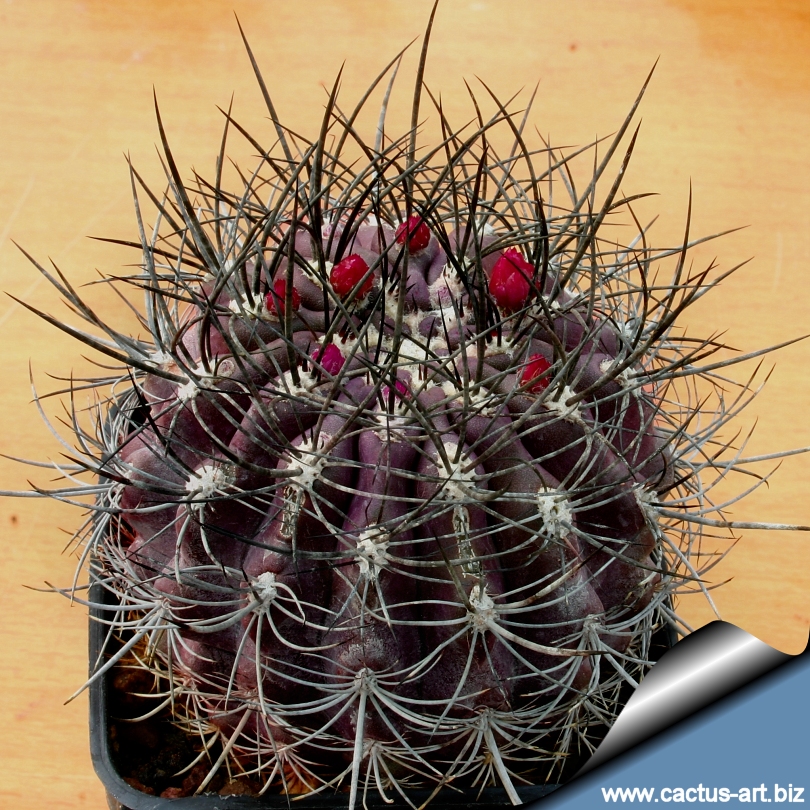
Eriosyce senilis subsp. coimasensis
Strong long brown-black spines
that become greyish as
they age.
|
|
Etymology:
The
genus name
"Eriosyce" derives from the Greek
words “Erion (εριον)”
meaning “wool” and “Sykos” meaning
“fig (a fruit)” . (The genus name implies:
“woolly fruits”).
|
|
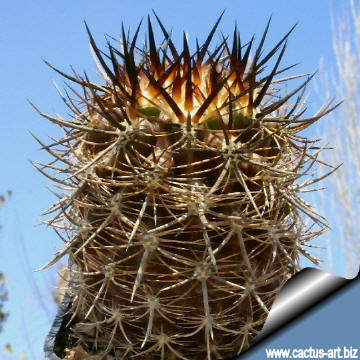
New spines |
Description:
Solitary
spherical to short
cylindrical cacti with very spiny stems, up to 15 (30-40) cm tall,
6 -10 cm in diameter.
Stem: Dark green to very dark purple-black.
Spines: variable between different populations , the type plant
have strong long brown-black spines
that become greyish as
they age and almost obscure the plant, while others have spines that are
much shorter or thinner.
Root: taproot.
Flowers: magnificent hot pink/magenta with a contrasting neon
yellow throats in spring up to 5 cm long.
Cultivation: It is a summer grower
species. Easy to cultivate but
somewhat
rot prone if kept in a non
ventilated place.
Water regularly in summer, but do not overwater,
needs a
full sun exposure (or
light shade)
Good heat tolerance.
Hardy to at least -5°C
( but probably can tolerate - 10° C for brief periods)
Propagation: Usually
propagated from Seeds.
(seldom produces offsets)
|
|
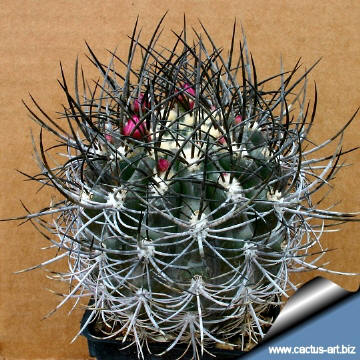
Buds |
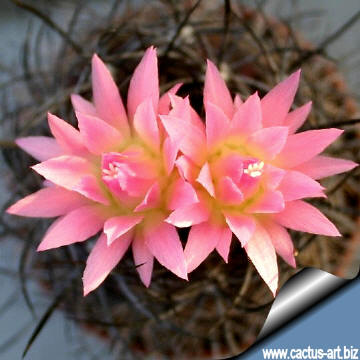
Flowers |
|


Advertising
|
|
|
|
|
Family:
Cactaceae (Cactus
Family)
Scientific Name:
Eriosyce senilis
subsp. coimasensis (F.Ritter) Katt. 1994
Synonyms:
Neoporteria
coimasensis F. Ritter
Published
in: Taxon, 12. 34, 1963
|
|
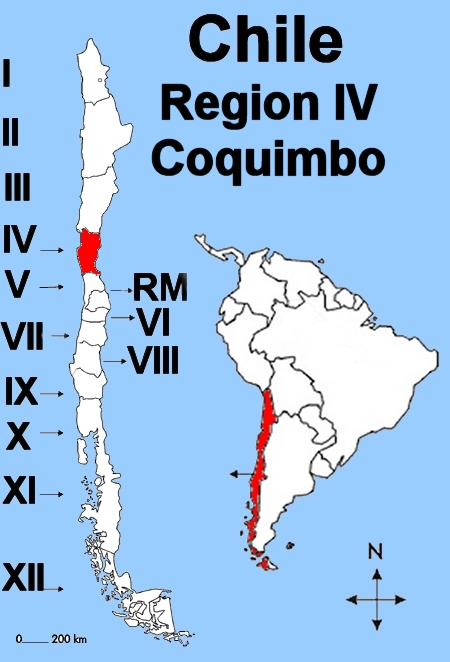 Origin:
This plant is widely distributed in various
locality of Coquimbo (Region 04) - Chile. Origin:
This plant is widely distributed in various
locality of Coquimbo (Region 04) - Chile.
Among them: Las Coimas, Las Chilcas, Salamanca, Metro, Choapa, Llapel,
Combarbalá, Los Vilos, Palomar, Chagres.
Conservation status:
Listed in
CITES Appendix II
|
|
|
|
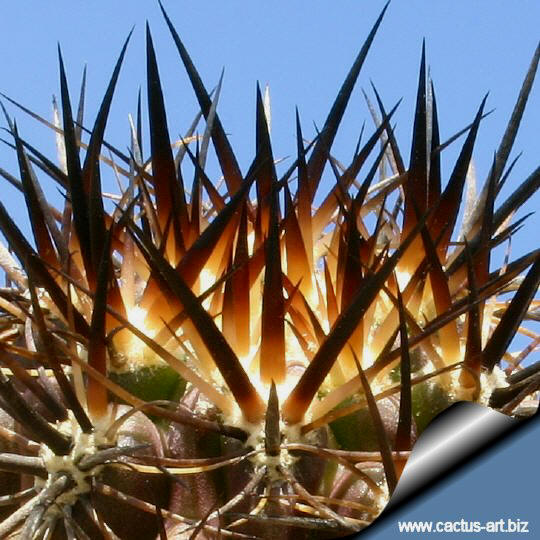
New
spines in
spring (For such a
wild spines it is indispensable a
full sun
exposure!!!)
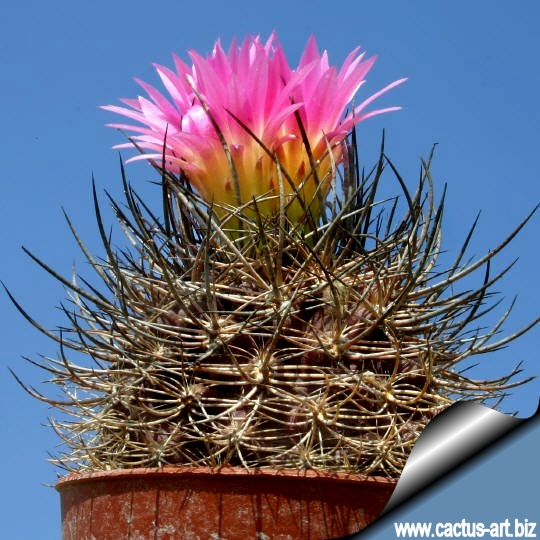
E. coimasensis FR473 - Spines and
flowers
|
Photo of conspecific taxa,
varieties, forms and cultivars of
plants belonging to the
Eriosyce senilis
complex
(This
Taxon
has lots of synonyms
(
like many other cacti) whit several controversial varieties and subspecies
and comprises a multitude of different forms, but where each form
is linked to others by populations of plants with intermediate
characteristics):
|
|